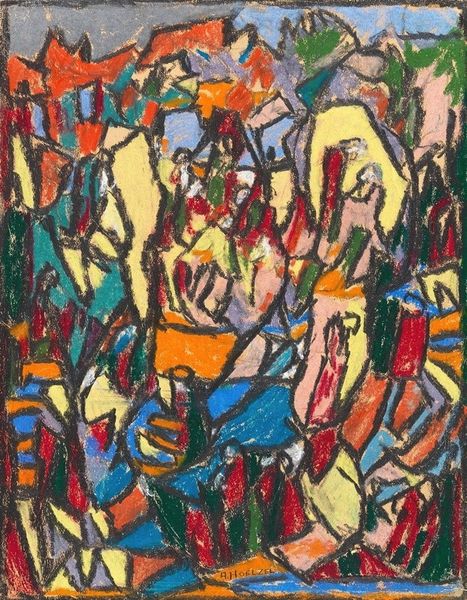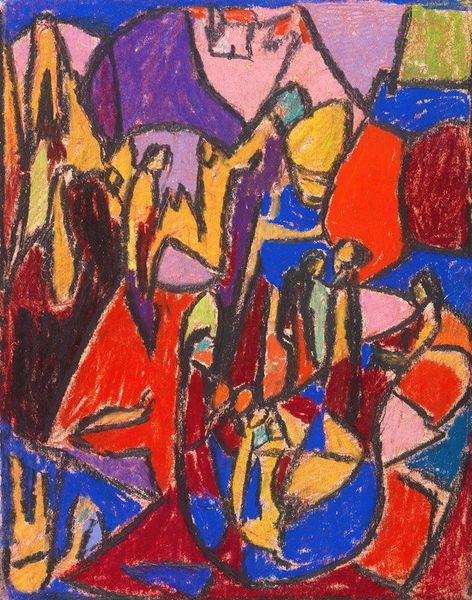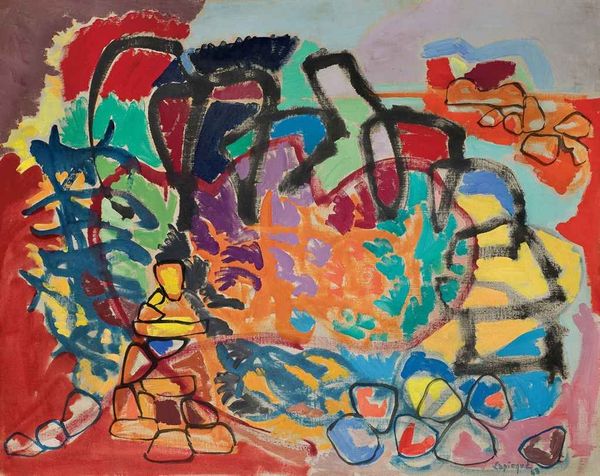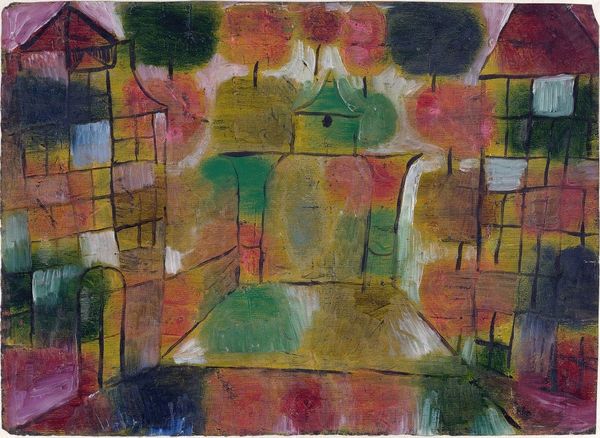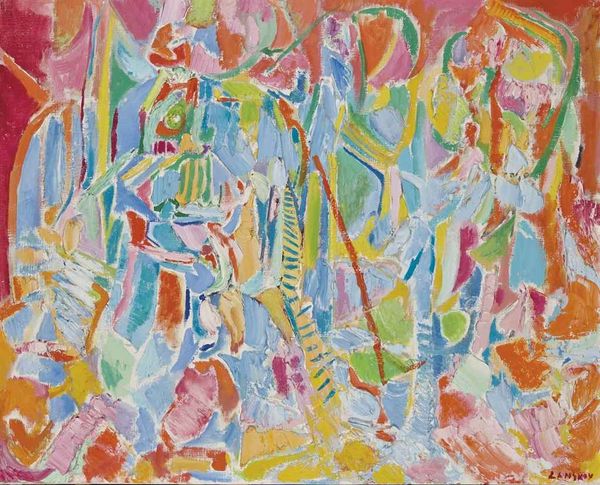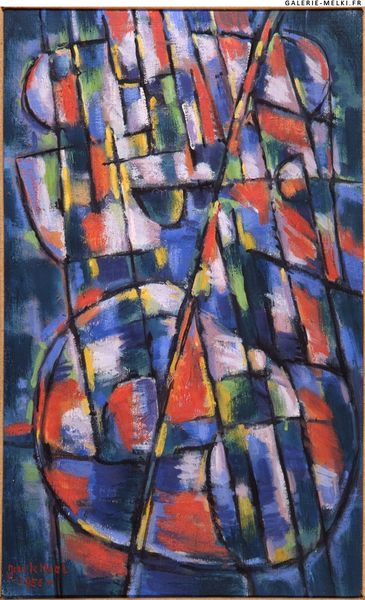
Copyright: Public Domain: Artvee
Editor: Here we have Sasza Blonder’s “Composition” from 1937, a riot of acrylic paint on canvas. It feels almost like a puzzle, doesn't it? A warm-toned jumble of geometric shapes...What do you see in this piece? Curator: I see a negotiation, and a dismantling. Blonder’s "Composition," especially considering it was painted in 1937, begs us to ask: what is she composing and, more importantly, what is she intentionally deconstructing? Notice how the traditionally feminine nude figure is fragmented and almost violently reassembled. Does that say something about the role of women in art at this time? Editor: It's interesting to consider the social context like that. It almost looks like she's challenging the male gaze… pulling it apart piece by piece. Curator: Precisely. Consider also the echoes of Cubism and Fauvism – movements dominated by men. Blonder inserts herself into this visual language, but she doesn't simply replicate it. The earthy palette also has meaning. How do we feel that compares to the more vibrant Cubist works by Picasso or Braque? Editor: Good point. It almost feels grounded, or raw…less about pure form and more about...maybe challenging those historical movements and imbuing them with personal experience? Curator: Exactly! What seems abstract is, in fact, deeply rooted in the body, in history, and in a radical rethinking of representation. It compels us to confront the politics of seeing and being seen. Editor: That's fascinating. I came in thinking it was just a bunch of shapes, but now I see so much more depth. Curator: That's the power of art isn’t it? To make us question, to make us see anew.
Comments
No comments
Be the first to comment and join the conversation on the ultimate creative platform.
